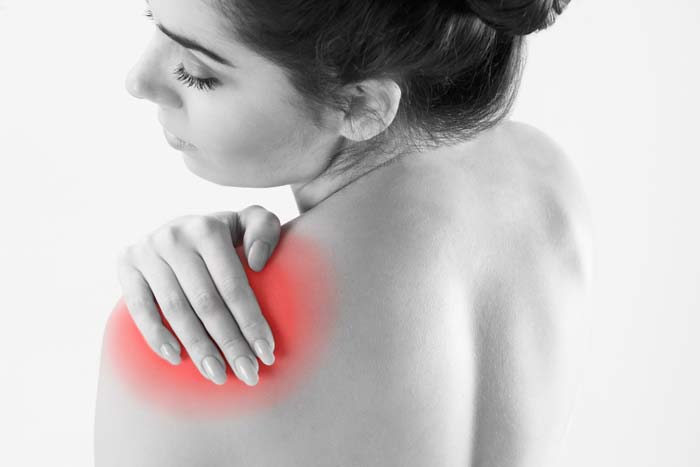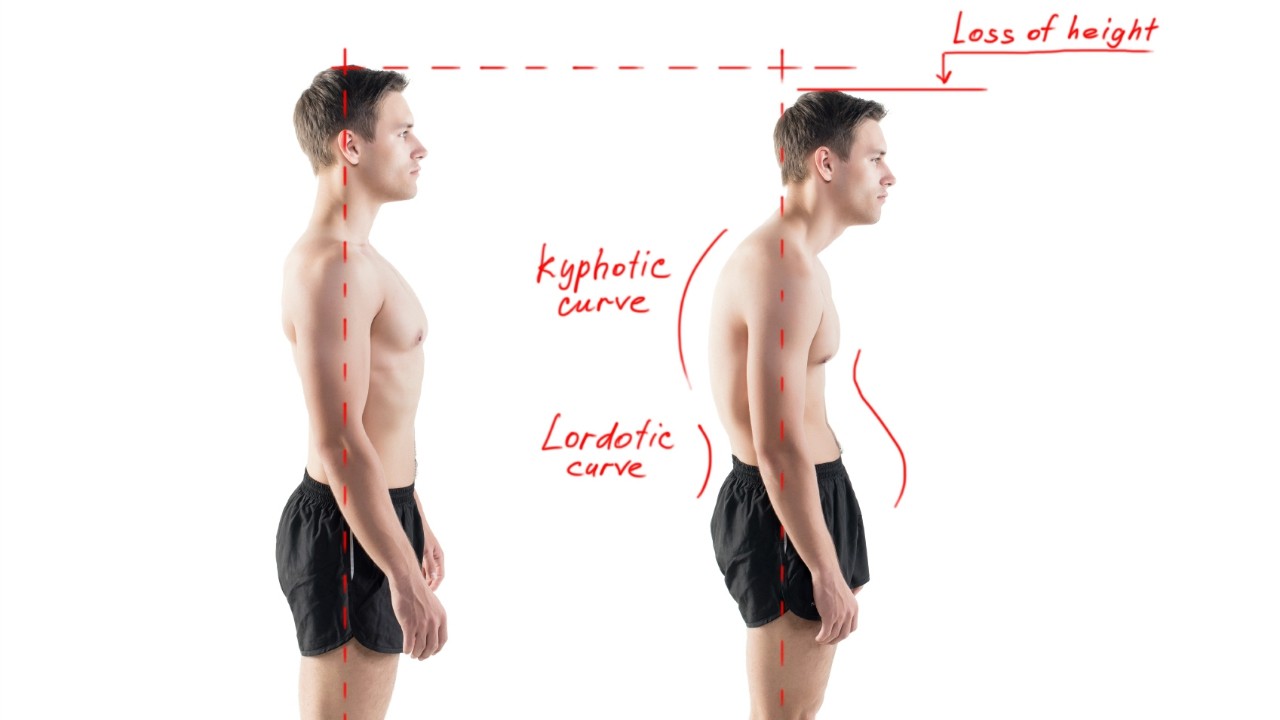
Frozen shoulder (also known as adhesive capsulitis) is a common disorder, in which the shoulder is stiff, painful and loses normal range of motion. It affects people mainly at the age of 40-60 and is more prevalent in women and diabetic population. The resulting disability can be serious and the condition tends to get worse with time if not treated.
Physiotherapy plays a vital role in the treatment of frozen shoulder, it aims to reduce pain, increase extensibility and improve the strength of the rotator cuff muscles. Physical therapy offers effective stretching exercises to treat frozen shoulder. Following are a few exercises which can help you:
1) Pendulum Stretch
The physiotherapist will ask you to relax your shoulders. This is going to be the initial exercises. All you need is to stand and lean slightly over a table, allowing the affected arm to hang down. Swing the arm in a small circle. Perform 8-10 revolutions in each direction. As the symptoms improve, increase the diameter of your swing, but never force it.
2) Finger Walk
Face the wall 3 quarters of an arm’s length away. Reach out and touch the wall with fingertips of the affected arm. With your elbow slightly bent, slowly walk your fingers up the wall, until you have raised the arm as far as you comfortably can. Your shoulder muscles should not move, but the fingers. Slowly lower the arm and repeat.
3) Armpit Stretch
Stand near a table which is of chest height, using the other hand lift the affected arm onto the table. Gently bend your knees, opening up the armpit. Bend your knees slightly, gently stretching the armpit and then straighten. With each bend, stretch a little further, but do not force it.
4) Strengthening Exercises
As the range of motion increases, your physiotherapist will introduce rotator cuff strengthening exercises which includes:
Outward rotation in which you are suppose to hold an exercise band between the hands with the elbow at 90-degree angle. Rotate the lower part of the affected arm outward two or three inches and hold for 5 seconds.
Inward rotation in which you’ll be asked to stand next to a closed door, and hook one end of the band around the door knob. Hold the other end with the affected arm. Pull the band towards your body 2-3 inches and hold for 5 seconds.
A physiotherapist will teach you the appropriate exercises and show how far to push yourself. Once you have learned your limitations, you can practice the exercises on your own at home. Kindly consult your therapist first.

Electrotherapy is the use of electrical energy as a medical treatment.
The use of electrotherapy has been researched and accepted in the field of rehabilitation.
1. Pain management
2. Treatment of neuromuscular dysfunction
Improvement of strength
Improvement of motor control
Retards muscle atrophy
Improves local blood flow
3. Improves range of joint mobility
Induces repeated stretching of contracted, shortened soft tissues
4. Tissue repair
Enhances microcirculation and protein synthesis to heal wounds
Restores integrity of connective and dermal tissues
5. Acute and chronic edema
Accelerates absorption rate
Affects blood vessel permeability
Increases mobility of proteins, blood cells and lymphatic flow
6. Peripheral blood flow
Induces arterial, venous and lymphatic flow
7. Iontophoresis
Delivery of pharmacological agents
Electrotherapy is a most popular form of cure for the sports injuries. The therapy uses the electricity to treat the soft tissue injuries. It is available in multiple forms like:
Interferential Therapy
Ultrasound
TENS (Transcutaneous Electrical Nerve Stimulation)
Laser
Shockwave
Shortwave diathermy
Galvanic stimulation
Faradic stimulation
Micro and russsian currents
Interferential Therapy
In order to create a physiological reaction a low frequency electrical stimulation of the nerves is used in IFT (Interferential Therapy). Even though low frequency electro treatments are usually linked with pain, however, Interferential Therapy intends to avert the pain as well as the unpleasant side effects. To create increased pain relief and mobility, the tissues and muscles are made to react by rhythmically increasing and decreasing the electric frequency in amplitude. For utmost effectiveness, it should be used with the combination of ultrasound. It can be used to relieve joint stiffness, pains and aches as well as to reduce swelling, speed up the recovery time and enhanced blood flow.
Ultrasound
Specifically when it comes to sports injury, one of the most commonly used forms of electrotherapy is ultrasound in the form of sound or mechanical energy. It is used at really high frequencies that are beyond the hearing capabilities of human beings. To increase the flow of blood, lessen joint stiffness and pain relief, the ultrasound wave is applied to the injured body part. To enhance the quality of the repair and amplify the rate of healing, ultrasound is always recommended. Be it tennis elbow or arthritis or any other type of sports injury, ultrasound has always proved to be one of the most promising treatments. The tissues that are more absorbent, ultrasound can treat them more effectively.
TENS (Transcutaneous Electrical Nerve Stimulation)
It can be used at both low and high frequencies to relieve the pain in nerves. The treatment is less localized to the injured portion as it focuses specifically on the central nervous system. TENS is generally used to treat neck and back pain, arthritic conditions and injuries of the deep and soft tissues.

The lymphatic structure is a complex process in living beings which includes fluid drainage, transportation, and immune response along with disease resistance. Lymph travels in one direction only, which is towards the heart. The lymphatic massage is a way to gently favoring the lymph flow through non-perceptible reflexology (Rubbing). Unlike other massages, lymphatic massage comprises of light, periodic and constant movements.
1) Beneficial after Cancer Surgery
After numerous scientific studies, it has been concluded that there are various effects of lymphatic massage on people after having cancer treatments, be it surgery or chemotherapy. It helps in reducing nausea, fatigue, depression, anxiety, pain, makes them feel relaxed, fast improvement of scar tissues, and mental alertness.
2) Helpful in Post Liposuction
Lumpiness and hardiness is commonly noticed after liposuction treatment, cool sculpting or smart-lipo surgeries, specifically in the abdominal area. Lymphatic massage post liposuction is wonderful that moves the fluid by gently pumping it back to the lymph vessels. Discomfort can easily be reduced by plummeting swelling and without lymphatic massage the inflammation can develop as a seroma or fibrosis.
3) Less Popular but More Beneficial
Lymphatic massages are less popular in comparison to other massages because it is less noticeable on the body due to its extreme fine touch procedure. The benefits from lymphatic massages can be experienced once you have taken up two or three sessions. It helps in removal of cell wastes, excess fluid, proteins, viruses, and bacteria. The session duration of lymph massage is at least for an hour.
4) Relaxes Mind and Body
Lymph massage work wonders if you are feeling tired, lethargic or recovering from any type of sickness. Moreover, it is helpful for sportspersons, surgical patients, Fibromyalgia and prolonged fatigue sufferers. This massage induces a state of relaxation in the body letting all the walls of vessels as well as bowels to be relaxed. For surgical patients, it helps in reducing swelling and detoxification of the body.
5) Enhances the Immune System
The immune system of our body is knitted closely to the lymphatic system. In case the flow of lymphatic materials decelerates, the immune system automatically weakens. Drainage massages can recover the function of immune system and boost the production of antibodies that fights back with various infections. Lymph drainage massages are also helpful in controlling inflammation in the body that causes diseases like arthritis.
Lymph massage grants a powerful impact on your body’s ability to recuperate. So, if you are feeling sluggish, experiencing slight to moderate swelling or trying to recover from a sports injury you must consider getting a few sessions of lymph massage. This ultra light massage, using repetitive and continuous hand movements, can optimize your lymph system effectively.

Posture refelects your personality.
4 Ways to Straighten Up
Your posture says a lot about your personality. It also defines how your muscles and joints are working. Despite the importance of having a good posture, most of us do not do anything to improve it. The muscle and ligament imbalances that result from bad posture can lead to all sorts of problems like chronic joint and back pain, muscle atrophy and reduced flexibility.
Here are some poor postures and ways to improve it:
Rounded Shoulders : This causes weakness in the middle and lower parts of the large muscle that spans the shoulders and back. To fix this problem, lie down on your stomach, with each arm at 90-degree angle in high five positions. Without changing the elbow angle, raise both arms by pulling your shoulders back and squeezing shoulder blades together. Hold for five seconds then relieve, do two or three sets of 10 reps daily.
Slouching in a Chair : It may not cause discomfort, but over time can strain muscles and soft tissues and cause pain. To fix this problem, lie on your front propped up on your toes and forearms. Keep the legs straight and hips raised to create a rigid and straight line from toe to head. The shoulders should be above the elbows. Keep your abs contracted during exercise. Hold this position for 10 seconds and repeat 7 to 8 times.
Leaning on One Leg: This causes excessive pressure on one side of the lower back and hip, which causes muscular strain. To fix this problem, lie on your right side with knee bent at 90 degrees and left leg straight and in line with your back. Press your left fingers into the top of the buttock. Raise your left leg as far as possible without letting the hips tilt back. Perform 8 to 10 times and repeat on the other side.
Hunched Back : Hunching over the keyboard can cause shoulder and upper back stiffness. To fix this, place your hands behind the head, pull the shoulder blades together and bring the elbow back. Hold this position for 30 seconds, release and relax and then repeat 10 times.
Poor posture takes a serious toll on your spine, shoulders, knees and hips causing a cascade of structural flaws which limit your ability to burn fat and build strength.
Schedule an appointment
( All appointments will be schedules within 24 hours! )


